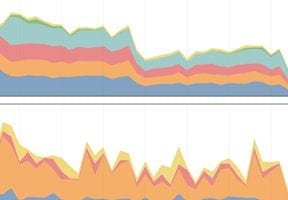It’s not a matter of organic search traffic being more important than paid, or vice versa. What matters is integrating the two — paid and natural search — so that the whole is larger than the individual parts.
The goal of integrated search is to use the data available from both organic and paid search programs for strategies that maximize visits and revenue.
In this post, I’ll review seven ways to integrate organic and paid search programs.
7 Ways to Integrate Natural and Paid Search
Overcome natural search challenges. Focusing on organic traffic is helpful when paid search terms are prohibitively expensive. Paid search is helpful when natural search isn’t performing.
Sometimes architectural or technical glitches of a site prevent important sections from ranking in natural search. For example, a section that contains compelling content or high-margin products could be buried six clicks deep in the site.
But fixing technical issues can be time consuming and expensive. Paid search could fill the gap, driving shoppers to important pages.
Maintain revenue after redesigns and replatforms. Natural search performance is vulnerable after a redesign or a migration to a new platform. Paid search can make up decreased natural search revenue if you plan.
After a redesign, search engines have to crawl and index a new environment, figure out the entirety of what changed, test how searchers will react to the new site, and determine algorithmically how that changes the site’s rankings. That doesn’t happen overnight, especially when the launch results in errors that have to be hammered out afterward.
The result is weeks or months of natural search instability or decline that can affect revenue. Paid search can mitigate the risk, to maintain visibility for the non-branded keyword phrases that will be most vulnerable.
Test controversial changes. Test how searchers and Google will react to changes that could impact natural search. For example, if you’re trying to convince a reluctant marketing team to add a small section of descriptive content to category pages, consider creating a paid-only landing page with the content block on it and testing it to see how Quality Score and conversion numbers shift. It’s not a one-to-one test of natural search benefit, but it’s far more applicable to how rankings would be affected than traditional A/B testing.
Stay top of mind. Help those shoppers who initiated their journey to your site from natural search to come back and complete their purchase. Use remarketing lists to remind searchers that they have products abandoned in their shopping cart by displaying an ad when they search on Google again for a similar term.
For example, if a shopper searches for “expandable luggage” and then adds products to her shopping cart during a visit to your site, remarket to her via an ad in Google, offering a reminder or even a small discount to come back and complete the purchase.
Gain visibility on ad-heavy results. On searches that carry a high purchase intent, Google inserts on results pages up to four ads at the top, plus product listing ads — the “Shopping” grids displaying products from multiple stores — and more ads at the bottom. Natural search results can be squeezed out of the first view entirely.
Regain visibility by bidding in paid search, but don’t give up on natural rankings. Research shows that your site is more likely to receive a click if it ranks in both paid and natural results versus one or the other.
High-ranking information sources. Organic results for informational searches can be harder for ecommerce sites to break into. Bid on ads for those searches, to increase visibility. For example, a search for “college laptops” returns results crowded with magazines and other informational sources. An ecommerce site could bid on ads for those queries to make it into shoppers’ consideration.
Keyword performance data. Google removed visibility of the natural search performance of specific keywords on specific URLs when it switched all searches to the secure protocol several years ago. That’s why you see “not provided” as the highest keyword in your analytics reports.
With access to AdWords, however, you can reclaim that lost data and analyze it with relevant paid search data — including Quality Score — to uncover opportunities to optimize both paid and natural search.




